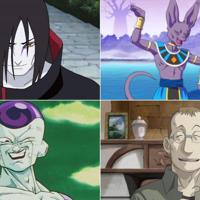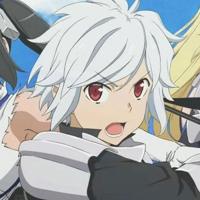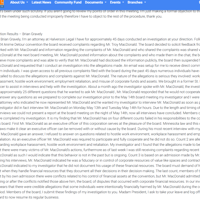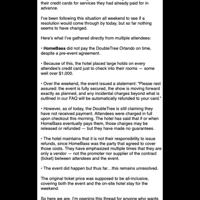
It was announced on Friday by Mainichi Shimbun's Mainichi Weekly website that they have started publishing the abridged English version of Keiji Nakazawa’s eye-opening manga series Barefoot Gen.
Known as Hadashi no Gen in Japanese, the abridged version was previously released in Japan in print that contains selected scenes and detailed explanations for the benefit of Japanese speakers who are learning English.
According to the announced the website will upload the series every morning for a total of 20 parts until August 5, which is the day before the infamous U.S. atomic bombing of Hiroshima in 1945. The manga will be up and available only until the end of August.
Mainichi Shimbun hopes that through publishing this manga, they will continue to spread the late Nakazawa’s messages of "No more Hiroshimas," "No more Nagasakis," and "No more Hibakusha" (atomic bomb victims).
Barefoot Gen is one of the popular manga series ever released that accurately retells the situation of Japan during the Atomic bombings. The manga’s popularity paved way for a anime movie adaptation. A sequel was planned for 2009 but halted due to Nakazawa’s failing health. He passed away at age 73 due to lung cancer in 2012.
Hadashi no Gen is based on the events experienced by author Keiji Nakazawa and other survivors of Hiroshima. After publishing the one-shot Ore wa Mita, Nakazawa's editor encouraged him to write more of his experiences. The manga was first serialized in Shonen Jump in 1973, but was cancelled the following year due to low polling. It continued publication in three different magazines until concluding in 1987—Shimin (Citizen), Bunka Hyouron (Cultural Criticism), and Kyouiku Hyouron (Educational Criticism). Nakazawa planned to write a sequel following Gen becoming a mangaka in Tokyo, but this idea was scrapped when he retired due to failing eyesight and illness.
Hadashi no Gen was first published in English as Gen of Hiroshima in comic book format by EduComics, in cooperation with the pacifist organization Project Gen, a group of voluntary translators that sought to bring the manga to a larger audience. Volunteers around the world likewise picked up this project, partially translating this title into French, Italian, German, Portuguese, Swedish, Finnish, Norwegian, Indonesian, Tagalog, Esperanto, and by 1994, completely into Russian.
In English, only two comic book issues were released originally between January 1980 and April 1981 before the publication was cancelled. Since then, a number of publishers partially published the series as Barefoot Gen, including New Society Publishers, who published the first four volumes from September 3, 1986 to December 1, 1993; Penguin Books, who published the first two volumes from August 1, 1989 to August 1, 1990, under the Penguin Originals imprint, with a new edition published July 27, 1995; and Last Gasp, who started publication from September, 1986, initially only publishing the first four volumes. After the revival of Project Gen, Last Gasp finally published all ten volumes unabridged (with subtitles) from September 1, 2004 to February 1, 2010.
About Barefoot Gen
1945, Japan. Gen Nakaoka is a spirited six-year-old boy who lives with his poor yet loving family in wartime Hiroshima. As the second World War rages on, Gen's father Daikichi stands among the few outspoken who are opposed to the emperor and stand for the innocent civilians bearing the brunt of the war. However, in a society with nothing but feverous support for their nation, Gen and his family are ostracized as traitors. Unbeknownst to them, a terrible fate awaits the people of Hiroshima...
One quiet morning, the US forces drop an atomic bomb on Hiroshima. In an instant, the city is completely destroyed, leaving thousands dead and many more exposed to radiation. Though Gen manages to survive the blast, he finds his life irreversibly changed. Regrouping with what's left of his family, Gen must now grapple with starvation, destitution, and an unsympathetic public who see survivors as little more than disease-ridden beggars.
Based on author Keiji Nakazawa's real-life experiences, Hadashi no Gen follows Gen and his fellow survivors in their struggle to survive in post-war Hiroshima. Gen resolves to soldier on with unwavering determination, while never forgiving those who caused the atrocity, never forgetting the pain of the bomb, and never letting his spirit be broken by the tragedy.
Source: ANN (with info from MAL)
See also: Top 5 Animes That Will Always Be Binge Worthy
See also: According to Fans, These 5 Anime have the Most Annoying Fanbases


According to Fans, These 5 Anime have the Most Annoying FanbasesOct 23, 22 1pm

10 Anime Characters Who Deserve DefeatAug 22, 22 12pm

5 of the Best (or the Worst) Anime Characters with Split PersonalitiesOct 19, 22 1pm

English Dub for The Yakuza’s Guide to BabysittingNov 23, 22 5pm

More Than a Married Couple, But Not Lovers Anime Adaptation will Premiere in October This YearSep 20, 22 12pm

Five New Anime Coming out in JulyJun 29, 22 2pm

Anime Adaptation for Murai in Love has been AnnouncedJul 9, 22 5pm

Twitter Exploded in Celebration for the 16th Anniversary of Fairy TailSep 6, 22 1pm

Ni No Kuni, The Anime, The Game and How They’re RelatedJul 25, 22 9am

Is It Wrong to Pick up Girls in a Dungeon? Probably not, if there’s soon to be 4 seasonsAug 3, 22 2pm

Two New Animated Specials for My Hero AcademiaAug 14, 22 9am

Anime fans can get your own free website on RavenMay 6, 24 7pm

Artificial Intelligence from OpenAI expands to TokyoAug 27, 24 9pm

Top staff suspended at Anime DetourApr 12, 24 2pm

Anime Detour removes Troy McDonald and Kristen Loth from executive teamJun 10, 24 5pm

Anime-affiliated musicians of blank paper to perform at Anime MidwestMay 15, 1pm

Music festival "Dirtybird" reportedly failed to pay hotel venue, reports The Festive OwlSep 3, 4am

Anime Milwaukee may have hired previously-fired Anime Detour executivesJan 31, 10pm

Yor's Appeal in 'SPY×FAMILY' is Her InnocenceNov 12, 23 2pm



